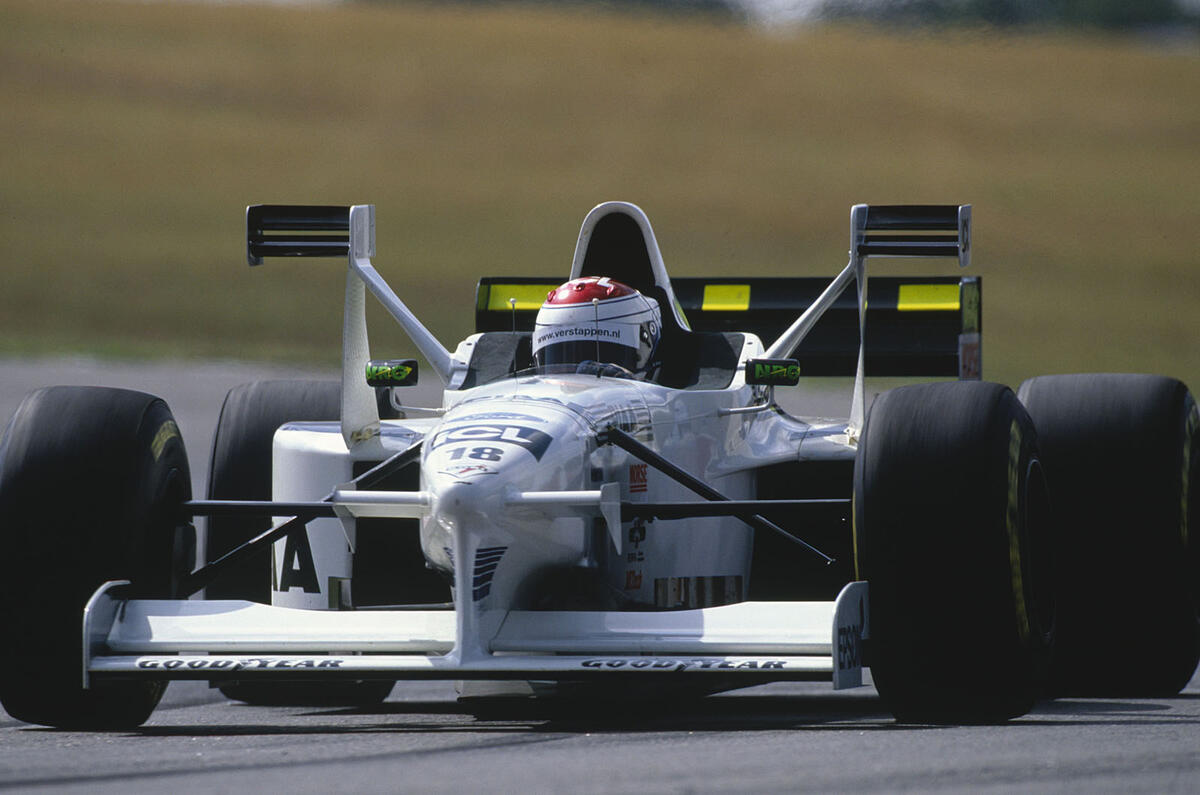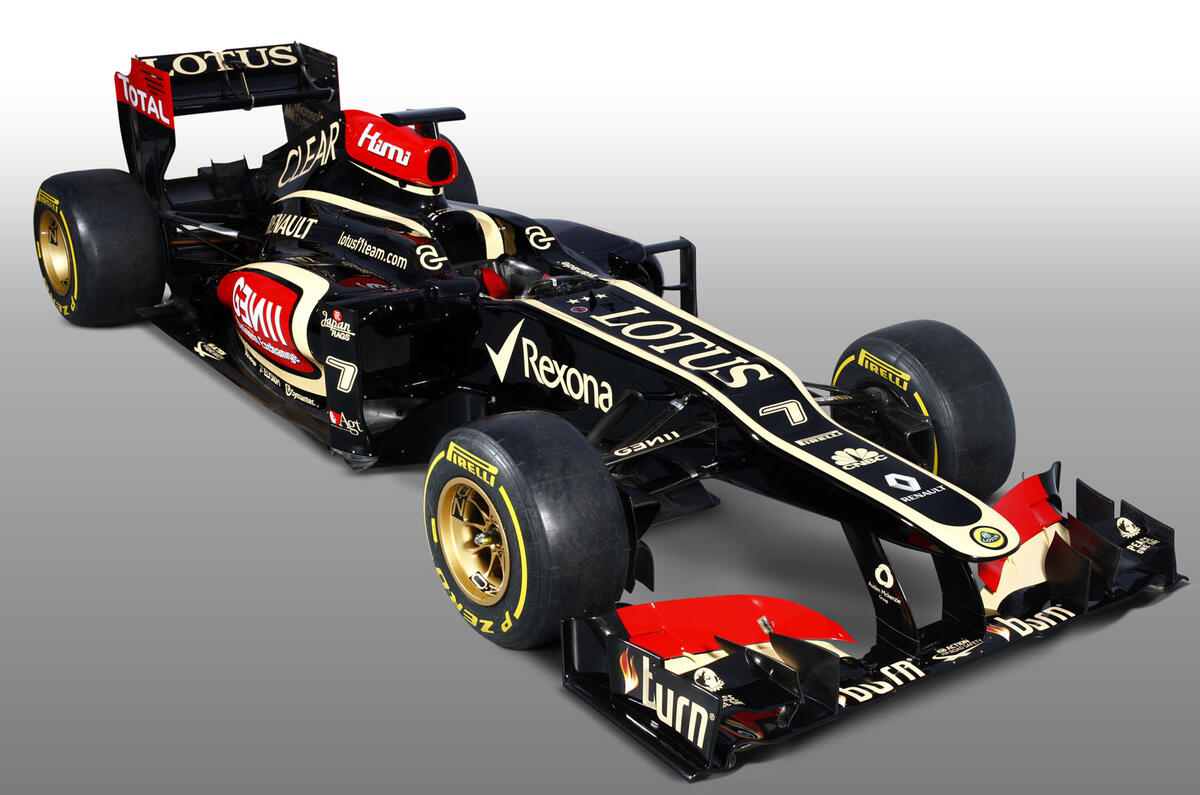It’s disappointing to see that this year’s crop of Formula 1 cars are going to follow their predecessors in being comprehensively beaten by the ugly stick. That is, if the work of Lotus, the first team to show off its 2013 design, is anything to go by.
The Lotus-Renault E21, launched at the team’s base in Oxfordshire yesterday, retains the ungainly stepped ‘duck bill’ front-end treatment that most Formula 1 teams adopted for the first time last year.
To be fair, the Lotus doesn’t look too bad because it carries that striking and evocative black and gold livery, but a quick straw poll of the Autocar office failed to throw up anyone who actually likes the underlying design.
The nose itself is a necessary evil, due to rules that stipulate that the nose of the car must be no more than 550mm high, but the section behind it can be up to 625mm high. A rule change has been brought in this year to give teams the opportunity to add a ‘modesty panel’ to cover up the awkward step, but it seems unlikely that many teams will bother to adopt it because of fears that it could confer a small weight disadvantage.
And therein lies the rub. The stakes in Formula 1 have never been higher, and the teams in F1 have little choice but to interpret the technical regulations in the way that offers the most competitive advantage. If the design of a component could contribute to a tenth of a second improvement in lap time, aesthetic concerns go right out the window.
We’ve been here before – the controversial and short-lived X-wings pioneered by Tyrrell were banned on safety grounds in the 1990s, but the fact they looked awful also played a part. Similarly, efforts to harness downforce in the 1960s involved perilously spindly rear wings on stilts that did nothing to improve the pretty lines of a Lotus 49.
The problem I have with the latest crop of ugly cars is that F1 is currently making huge efforts to align the sport more closely with road cars.
One of the key tenets of performance road car design is (in most cases at least) to make them pleasing to the eye. I appreciate there’s a huge gulf between a single-seater racing car and a production car, but a manufacturer that creates beautiful road cars – such as Ferrari, for example – should surely seek to reinforce that reputation through its Formula 1 programme? No surprise, then, to learn that Ferrari is one of the few teams planning to use the prettier ‘nose job’ on its latest design.










Join the debate
Add your comment
through to the clever but
Never think that car shows
Never think that car shows are boring, | seo analyst | seo if you find the good ones you are sure to have a great time and the time spent locating the show is a great investment. You are going to have a ton of fun planning your trip and searching for the car shows of your dreams as you can see is really a simple project. tangkas online
4 out of 5
So far using the vanity panel. I'd got used tip stepped noses but the 2013 cars looking better